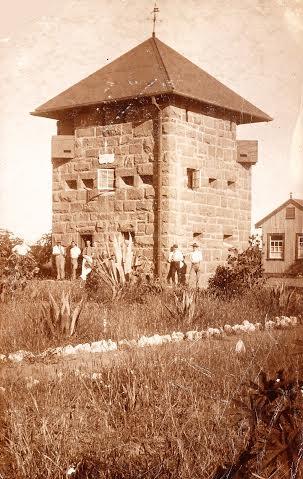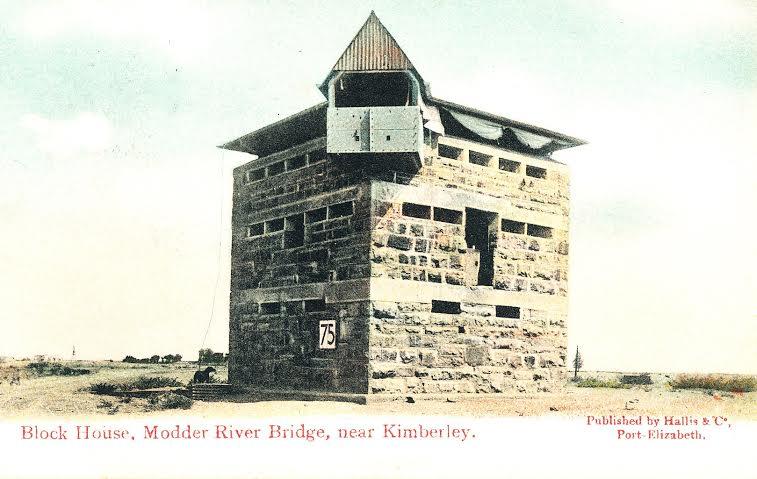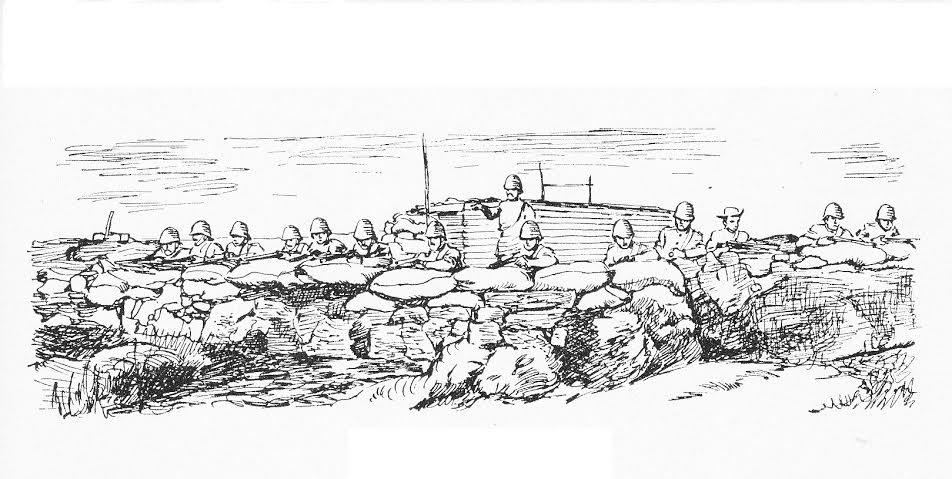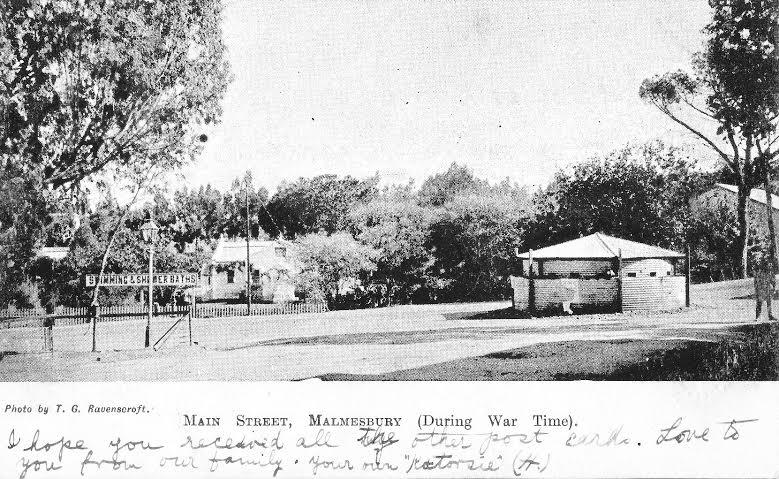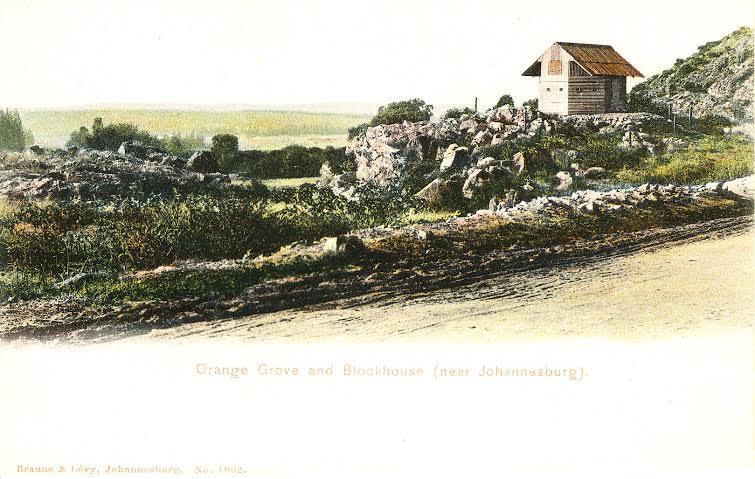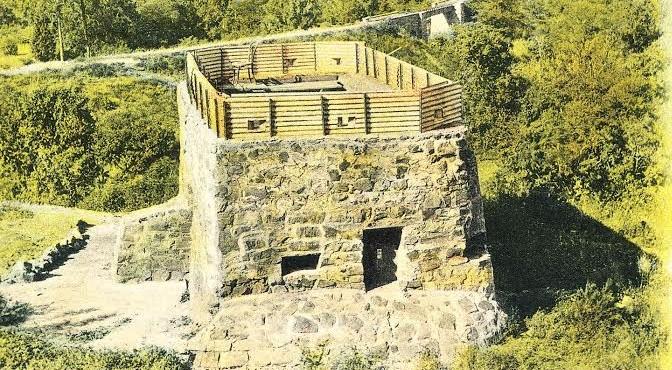
Disclaimer: Any views expressed by individuals and organisations are their own and do not in any way represent the views of The Heritage Portal. If you find any mistakes or historical inaccuracies, please contact the editor.
During the South African War of 1899-1902 blockhouses formed an essential part of British military strategy against Dutch forces. Initially these were fairly substantial and were used to guard key military points, but once the war moved into its final stages, they were used, together with barbed wire, as a means of limiting the movement of Republican commandos. All in all, some 8000 blockhouses were built over a period of two years, and although most were eventually dismantled, a number still remain in silent testimony of a bitter and foolish war.
When war broke out in October 1899 the British army was faced with the problem of engaging an enemy in the southern African interior with lines of communication stretching some 800-1200 km. The nearest available ports were Cape Town, Port Elizabeth and East London, and the only rapid means of reaching the theatre of war available to them was the Cape’s newly-developed railway system whose lines had only reached Colesberg in 1883, Kimberley in 1885, and Mafeking in 1894. The shorter route from Durban had been cut off early on in the war by the Republican invasion of Natal, and in order to limit the threat of Republican attacks upon the railway infrastructure further south, the British began to build a series of blockhouses to guard key railway points and bridges.
At first the men on sentry duty lived in either army tents or in corrugated iron sheds provided by the railways. However these structures offered little protection from either the excesses of the South African climate or from Republican bullets, and a more substantial type of structure was clearly called for. Work on a number of fortified blockhouses began towards the end of 1900, at a time when the war was reaching a stalemate and Republican military strategy was shifting from the battlefield to the redeployment of troops into highly mobile detachments of horse commandos. The ranks of the British army included a number of well-qualified builders, stone masons and architects, whose services were transferred to the Royal Engineers. Consequently the quality of the work on these early structures was of a generally high standard.
The first blockhouses were substantial square-plan structures, three-storeys high, built in dressed stone and finished with a low-pitch corrugated iron roof. Steel-protected embrasures were located on each floor, while two steel boxes projected at diagonally opposite corners of the top floor to provide covering cross-fire to the walls below. Access to the first floor was by means of a two-piece, bullet-proof steel door located high above the ground floor. This could only be reached by means of a retractable ladder which was hoisted upwards by means of steel tackle. Floors consisted of timber planks carried by a framework of steel joists built into the stonework. The sleeping quarters were located on the first floor, while most of the ground floor was taken up by a large water tank.
A Three-storey Blockhouse
Block House Modder River Bridge
The design was developed by the army’s chief engineer in South Africa, General Sir Elliot Wood, who based it upon a similar pattern he had used in the Sudan during the 1880’s. Examples of this structure may still be found at Wellington, Burgersdorp, Harrismith, Wolseley, Montagu, Prieska and Laingsburg, while others are scattered about the Magaliesberge and the foothills of the Khahlamba. A miniaturised version may also be found in the cemetery at Darling.
Although Wood’s design was excellent and did good service in guarding the railway links, it was too substantial and hence too expensive and time-consuming to build. These shortcomings became more evident after January 1901 when the Dutch began to redefine the nature of the conflict and reconstituted their field forces into smaller groups of highly mobile horse commandos. The wide-open plains of the southern African interior presented few obstacles to their movement and when Republican forces invaded the Cape for the second time, they were able to drive deep into British territory and hit with impunity at civilian targets, causing havoc to the Colony’s well-established civilian service infrastructure. In an attempt to limit these guerrilla tactics the British began to criss-cross the country with a series of barbed wire fences, which they hoped would hamper commando movement and eventually force their surrender.
By the end of the war, in May 1902, the main lines of barbed wire stretched from Cape Town to Mafeking, Port Elizabeth to De Aar, Naaupoort to Pietersburg, East London to Aliwal North, Rustenburg to Lourenco Marques, Durban to Mafeking, and from Hutchinson to Carnarvon, Calvinia, and thence through to the west coast. In most cases these ran alongside existing railway lines, which made the task of patrolling them, and of servicing the needs of men on sentry duty, a relatively simple matter. The wire used varied from the simple, two-strand coil to the much-vaunted eight-stranded variety, which was reputed to be “uncuttable”.
Blockhouses formed an essential part of this policy, and it was planned to string out a series of these structures along the fences within sight of each other. The number involved was massive, and because the Wood prototype was too substantial for this use, a smaller, more affordable unit, suitable for mass-production, was called for. The answer was provided by Major SR Rice, of the Royal Engineers, who reduced the concept of a blockhouse to a simple cylindrical drum topped by a corrugated iron roof and surrounded at its base by a circular wall of stones or sand-bags. The inner tower was created by placing two corrugated-iron water tanks of differing diameters, one within the other, and filling the space between them with stones and earth. The perimeter defences were often supplemented by trenches, but these were used more as shelters than firing positions. The final product may not have been as permanent as Wood’s design, but then it was not as expensive.
A scene around a smaller blockhouse
Block House Main Street Malmesbury
Boredom and troop morale were probably the greatest problems faced by the military. Gardening and gambling were favourite pastimes, but some ingenious troopers also spent time devising alarms involving old tins, pebbles and trap guns set to go off should anything brush against the wire. At the height of this programme some 56,000 soldiers were tied up on blockhouse sentry duty, with thousands more being involved in the transportation and distribution of supplies and stores.
In addition to these blockhouses, a number of other structures, similarly inexpensive, were used to strengthen the defences of smaller towns and villages. George, for instance, had six in the town and two overlooking the Montagu Pass. Despite, or perhaps because, of these precautions, George was never attacked, and the only shooting incident involving the military during this time resulted in the death of a donkey. Other villages were not as fortunate, and Republican commandos ranged widely from Darling in the western Cape, to Okiep in Namaqualand, and Lady Grey in the eastern Cape. In particular they targeted the postal and transport infrastructure, as well as those Dutch families whom they considered to have betrayed their cause, often flogging their men and burning their property.
Although some members of the Republican leadership, such as General Christiaan de Wet, were openly dismissive of the blockhouse policy, describing it as the “Blockhead system”, others, like General Louis Botha, were more realistic in their assessment when they stated that blockhouses “are likely to prove the ruin of our commandos”. Thus even though relatively few blockhouses saw action, they nonetheless played an important role in bringing the conflict to an end. After the war they were abandoned, and although a number of units built to Wood’s design have survived to the present day, Rice’s blockhouses were dismantled almost immediately by the civilian rural population, who were now displaced, homeless, and in dire need of building materials.
Orange Grove Blockhouse
Franco Frescura - Professor and Honorary Research Associate, University of KwaZulu-Natal. He is currently engaged in the documentation of the historical built environment of Durban, including aspects of its oral history and material culture.
Comments will load below. If for any reason none appear click here for some troubleshooting tips. If you would like to post a comment and need instructions click here.

